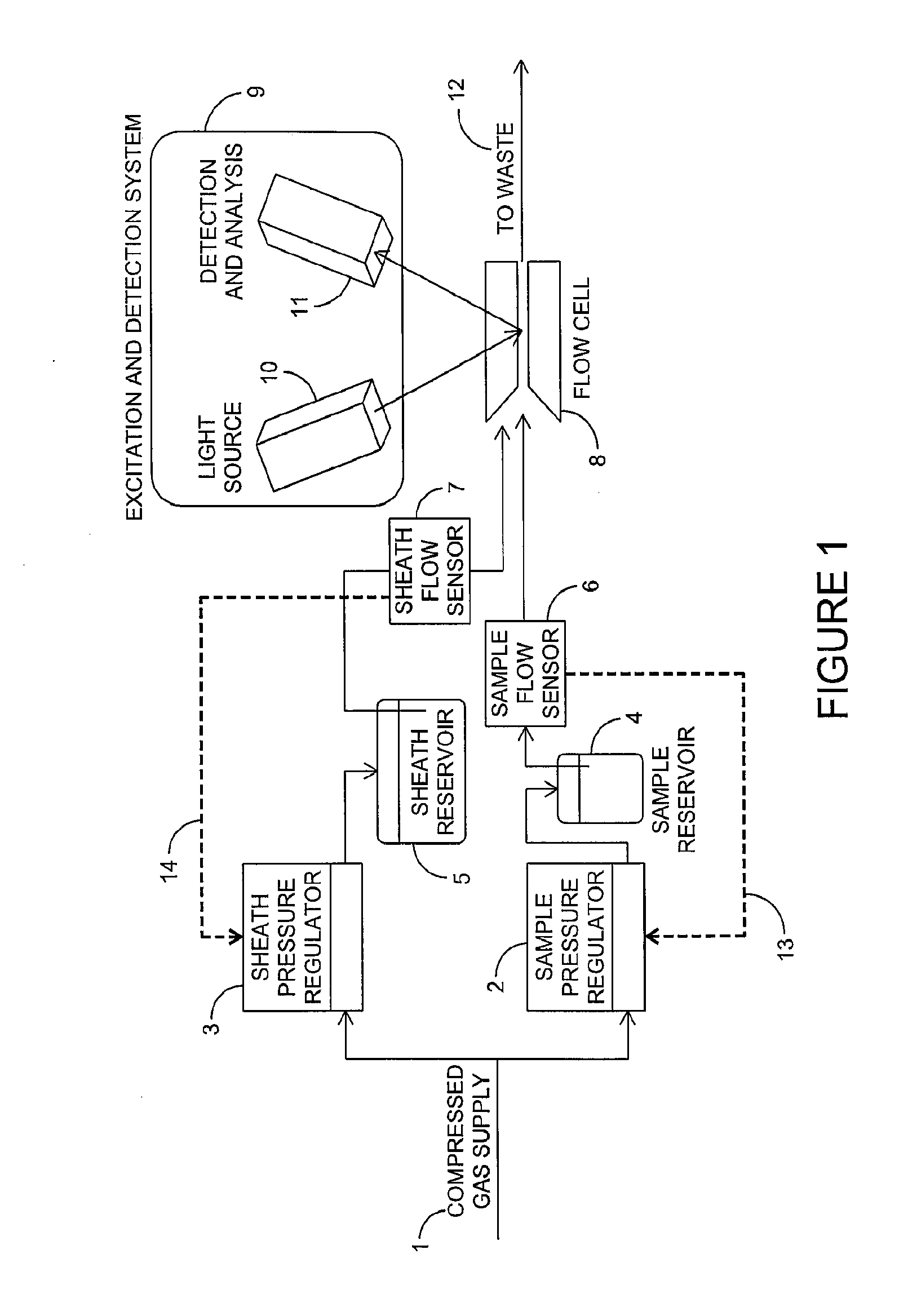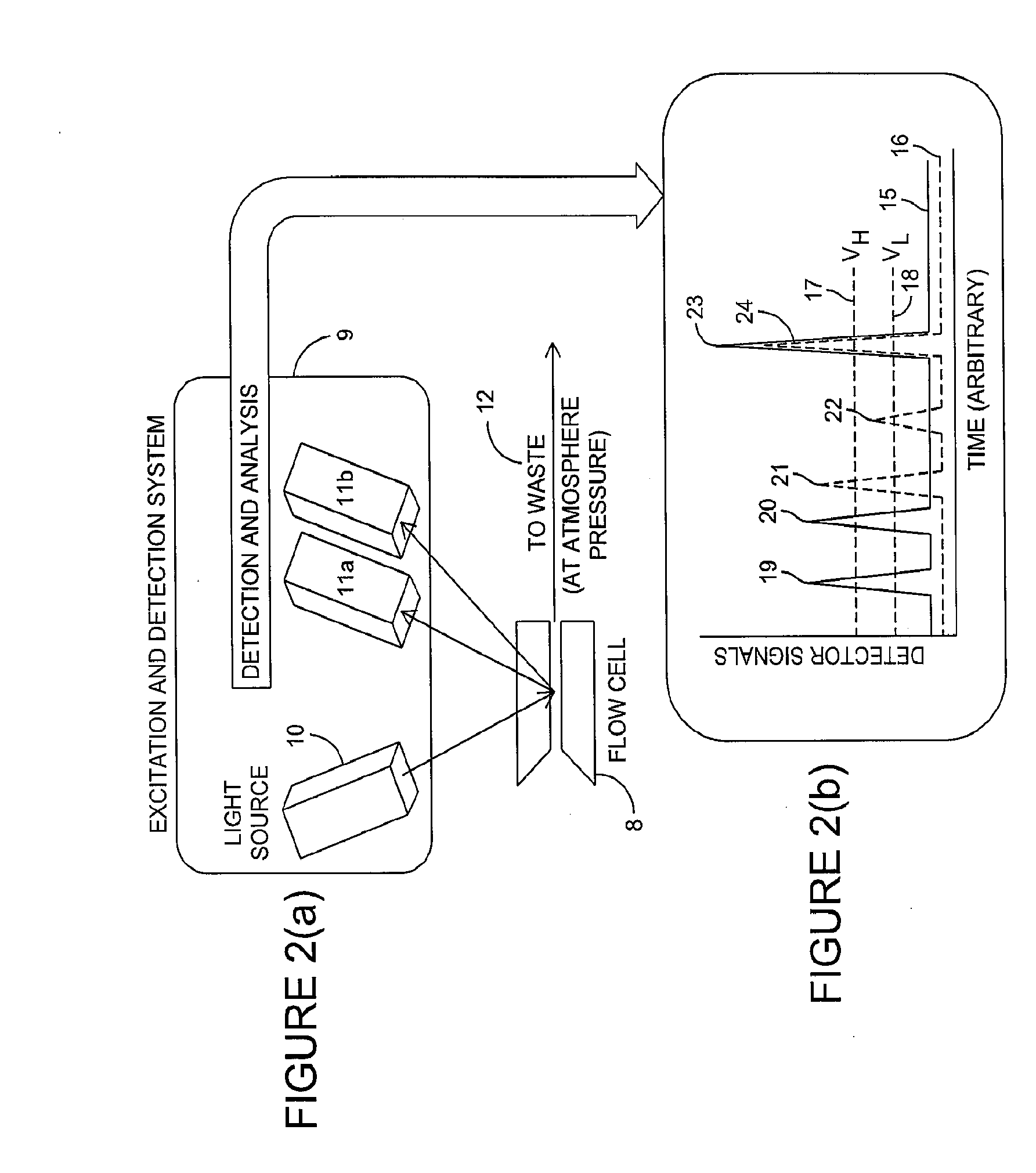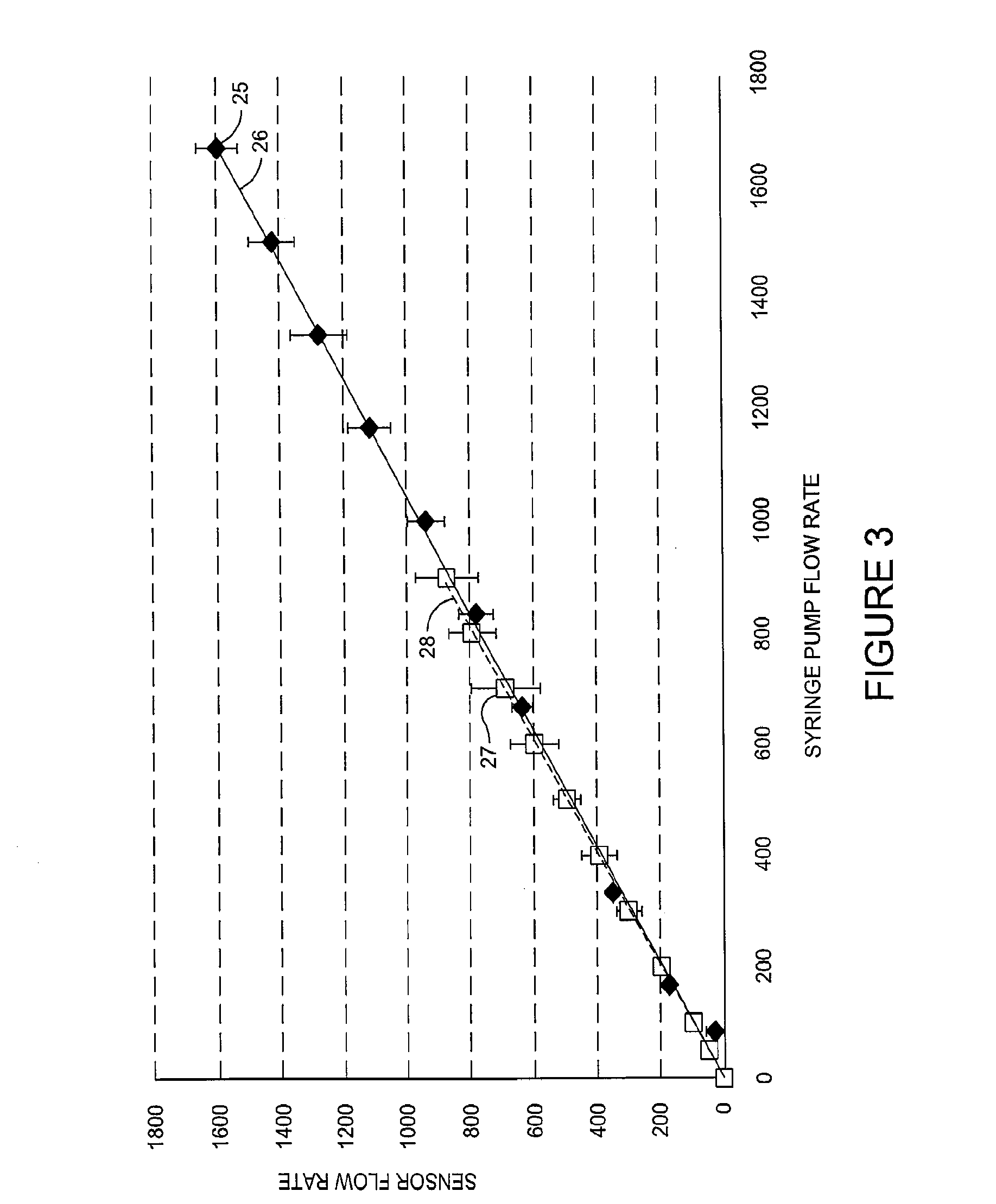Flow Measurement and Control for Improved Quantification of Particles in Flow Cytometry
a flow cytometry and flow measurement technology, applied in the field of flow measurement and control for improving the quantification accuracy of particles in flow cytometry, can solve the problems of limited analyzing particles, affecting so as to and improve the accuracy of particle quantification
- Summary
- Abstract
- Description
- Claims
- Application Information
AI Technical Summary
Benefits of technology
Problems solved by technology
Method used
Image
Examples
Embodiment Construction
[0024]These and other features and advantages of the described invention reside in the construction of parts and the combination thereof, and the mode of operation and use, as will become apparent from the following description and examples, reference being made to the accompanying drawings. The embodiments and features of the present invention are described and illustrated in conjunction with systems, tools and methods which are meant to exemplify and to illustrate, not being limiting in scope. For purposes of illustration, the exemplary embodiments that follow are discussed in reference to a method in which two fluid flow paths are merged, without substantial mixing, into a flow cell and two detection channels are utilized. It should be understood that the present invention is not limited to methods involving only one or two fluid flow paths and one or two detection channels, and is also applicable to devices and methods involving more than two fluid flow paths and more than two d...
PUM
| Property | Measurement | Unit |
|---|---|---|
| size | aaaaa | aaaaa |
| size | aaaaa | aaaaa |
| particle size | aaaaa | aaaaa |
Abstract
Description
Claims
Application Information
 Login to View More
Login to View More - R&D
- Intellectual Property
- Life Sciences
- Materials
- Tech Scout
- Unparalleled Data Quality
- Higher Quality Content
- 60% Fewer Hallucinations
Browse by: Latest US Patents, China's latest patents, Technical Efficacy Thesaurus, Application Domain, Technology Topic, Popular Technical Reports.
© 2025 PatSnap. All rights reserved.Legal|Privacy policy|Modern Slavery Act Transparency Statement|Sitemap|About US| Contact US: help@patsnap.com



